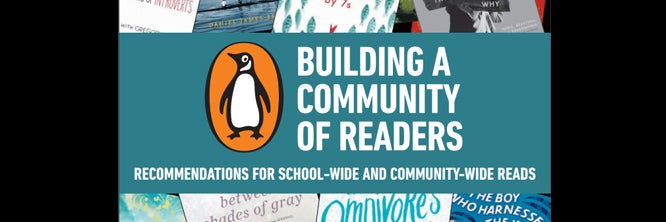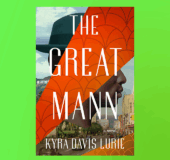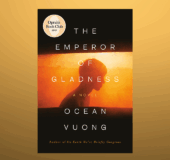America is a nation of over 316 million individuals. Although many of us praise our unique American individuality, we also create strong communities. Some of those communities revolve around family, religion, enthusiasm for a sports team, hobbies or pastimes. But we also have the opportunity to build a community of readers, a community built around ideas and themes found in literature.
Such reading programs encourage members of a community, whether it be a grade, school, town, or city, to read a single title simultaneously and freely discuss the concepts and content of that book. The natural place for such a program is the library.
Known by a variety of names, from “One School, One Book” to “The Big Read,” these programs rely on individual librarians to design their offerings around local needs and circumstances. Several shared goals drive each common reading program, including creating civic unity through literature, promoting literacy, fostering an appreciation of books and reading, and providing a forum for bringing together various members of the larger community. Programs in school and public libraries offer unique challenges and rewards. Above all, programs like these require books with big ideas. Consider the following offerings as you begin thinking about your own community reading program, and thank you for supporting our books and our brand.
Tips for Creating a Successful Common Reading Program:
- Set Program Goals – Identify needs, create plans, and predict the impact that your program will have on your community
- Establish a Timeline – Make a weekly or monthly checklist that is practical and useful
- Find a Partner – Look to municipal organizations in your town, city, or state, or a local bookstore, for financial support
- Build a Budget – Determine how your school or library will fund the project
- Define an Audience – With the selection of titles on the Common Reads website, you can easily define who your program should reach
- Select a Book – Based on popular community interests, issues, and values, choose a book that fits your needs
- Develop Events and Programs – Whether you are inviting an author, partnering with a theater for a production, or displaying artwork at an exhibit in town, think about ways to incorporate outside community organizations in your event
- Create a Communications Office – Create a team of people to market, publicize, and advertise the program and facilitate the execution alongside your library or school staff
- Have Fun! – Remember that the goal of the program is to unite your community with one shared reading experience…so enjoy the experience to its fullest!
For more tips on running your own Community Reads program and to see some of Penguin Young Readers recommended titles, check out our guide to building a community of readers!





